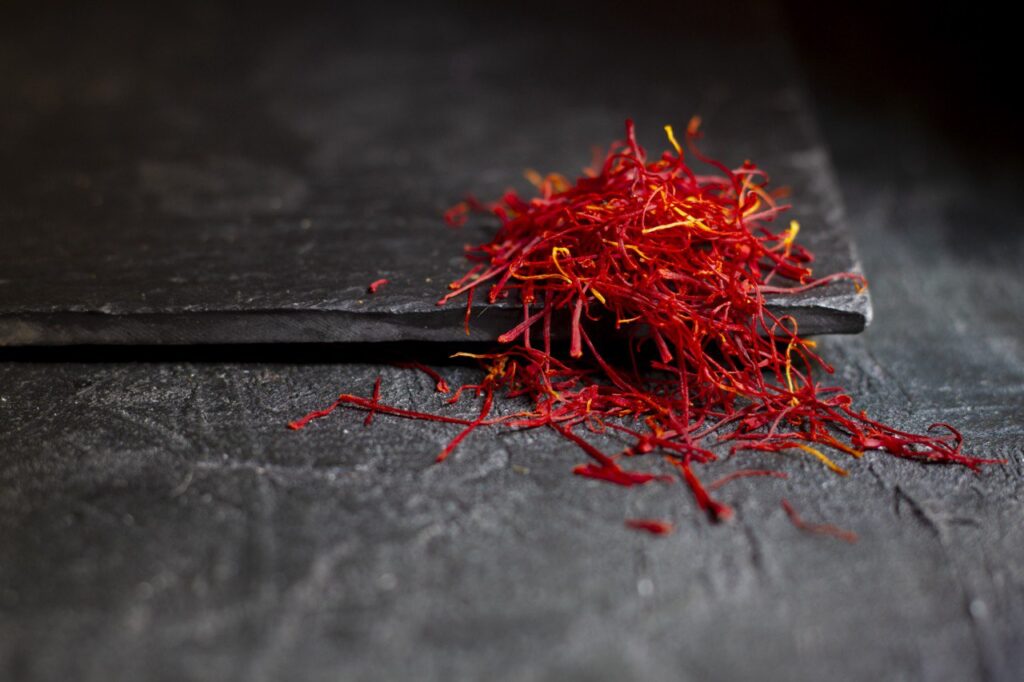Saffron, renowned as one of the world’s most expensive spices, has been cherished for centuries for its unique flavor, vibrant color, and medicinal properties. Derived from the delicate stigmas of the Crocus sativus flower, saffron’s labor-intensive cultivation process contributes to its high value. In recent years, the global saffron market has witnessed significant growth, driven by increasing demand across various industries, including food and beverage, pharmaceuticals, and cosmetics. As companies and intermediaries navigate this evolving landscape, understanding current trends, pricing dynamics, and future projections becomes imperative. This comprehensive overview delves into the factors shaping the saffron market, offering valuable insights for stakeholders aiming to capitalize on emerging opportunities.
Key Trends Shaping the Global Saffron Market
The global saffron market is experiencing a robust expansion, with its size estimated at USD 602.2 million in 2023 and projected to reach approximately USD 959.38 million by 2030, growing at a compound annual growth rate (CAGR) of 7.1% from 2024 to 2030.  This growth is primarily attributed to several key trends:
- Rising Demand in Culinary Applications: Saffron’s distinctive flavor and color have solidified its status as a premium ingredient in global cuisines. The food and beverage sector accounted for 58.1% of the market share in 2023, with a CAGR of 6.7% expected through 2030.
- Expansion in Pharmaceutical and Cosmetic Industries: Recognized for its antioxidant and anti-inflammatory properties, saffron is increasingly utilized in health supplements and skincare products. This trend is bolstered by consumer preferences shifting towards natural and organic ingredients.
- Technological Advancements in Cultivation: To address challenges posed by climate change and urbanization, innovative cultivation methods such as indoor and vertical farming are being explored. These techniques aim to ensure a consistent and sustainable saffron supply, mitigating environmental impacts.
Pricing Dynamics and Market Challenges
Saffron’s high value is a reflection of its labor-intensive harvesting process and limited cultivation regions. Prices are susceptible to fluctuations due to various factors:
- Climate Change Impacts: Adverse weather conditions, including prolonged droughts, have led to decreased yields in major producing countries like Iran, which supplies approximately 90% of the global saffron market. For instance, Iran’s production dropped from 400,000 kilograms in previous years to 80,000 kilograms in 2023.
- Geopolitical Factors: Sanctions and political instability in key producing regions can disrupt supply chains, leading to price volatility.
- High Production Costs: The meticulous hand-picking process and the requirement of a large number of flowers to produce small quantities of saffron contribute to its premium pricing.
Future Projections and Opportunities

The saffron market is poised for continued growth, with projections indicating a market size of USD 1.18 billion by 2030, at a CAGR of 5.86% from 2025 to 2030.  Companies and intermediaries can capitalize on several emerging opportunities:
- Diversification of Product Applications: Exploring new applications of saffron in sectors such as nutraceuticals, functional foods, and personal care products can open additional revenue streams.
- Investment in Sustainable Cultivation Practices: Adopting advanced farming techniques, including controlled environment agriculture, can enhance yield quality and quantity, ensuring a stable supply to meet rising demand.
- Expansion into Emerging Markets: Regions like Asia-Pacific are witnessing increased saffron consumption due to rising disposable incomes and growing awareness of its health benefits, presenting lucrative market entry opportunities.
The Impact of Price Fluctuations on the Global Saffron Market
Saffron prices experience significant fluctuations due to various factors such as supply-demand dynamics, climate conditions, production costs, and geopolitical events. These fluctuations directly affect global trade, influencing both suppliers and buyers.
For instance, an oversupply in the market can lead to a price drop. According to Iran’s National Saffron Council, increased saffron availability caused the price of high-grade Negin saffron to fall from 115 million to approximately 100-105 million tomans per kilogram in early 2024. (vista.ir)
For businesses and intermediaries, these fluctuations impact decision-making. A price drop reduces exporters’ profit margins, pushing them to seek alternative markets or optimize production processes. Conversely, sharp price increases may discourage price-sensitive buyers, limiting demand growth.
To navigate price volatility, companies can implement strategies such as securing long-term contracts with suppliers, leveraging financial tools for price risk management, and diversifying their market reach. Staying updated with market trends and employing predictive analytics can also help businesses make informed decisions.

Iran’s Role in the Global Saffron Market
Iran is the world’s largest saffron producer, supplying over 90% of global saffron demand. However, despite its dominant production share, Iran’s saffron export revenue stands at approximately $300 million, a small fraction of the estimated $8 billion global saffron trade. (tejaratnews.com)
The discrepancy between production and market share highlights key challenges in Iran’s saffron trade, including inadequate branding, lack of competitive packaging, limited international marketing, and export restrictions. While Iranian saffron dominates raw production, much of it is rebranded and sold by other countries, particularly Spain and the UAE, at higher margins.
To strengthen its position in the global saffron market, Iran must invest in premium packaging, adopt international marketing strategies, and actively participate in global trade exhibitions. Improving export policies and reducing trade barriers will also enhance Iran’s competitiveness in the global saffron industry.
Future Predictions for the Saffron Market
The global saffron market is poised for significant growth, driven by expanding applications in the food, pharmaceutical, and cosmetic industries. Reports estimate the market was valued at $374.6 million in 2020 and is projected to reach $721.5 million by 2028, growing at a CAGR of 8.5%. (jetsa.net)
Key factors contributing to this growth include:
- Rising consumer awareness about saffron’s health benefits.
- Increased use of saffron in nutraceuticals and functional foods.
- Innovations in saffron farming, including controlled-environment cultivation and indoor farming to counter climate challenges.
Despite these growth projections, the saffron industry faces challenges such as climate-related yield reductions, price volatility, and geopolitical trade barriers. For businesses and intermediaries, success in this evolving market depends on diversifying supply sources, investing in branding, and staying ahead of market trends.
With strategic investment and innovation, saffron producers and traders can capitalize on emerging opportunities and maintain long-term profitability.
Saffron Market: Embracing Change for a Thriving Future
Saffron’s esteemed status as a versatile and valuable spice continues to drive its demand across multiple industries. While challenges such as climate change and geopolitical factors pose risks to supply stability, technological innovations and strategic market expansion offer promising avenues for growth. Companies and intermediaries equipped with a comprehensive understanding of market dynamics and proactive investment in sustainable practices are well-positioned to thrive in the evolving global saffron market.




